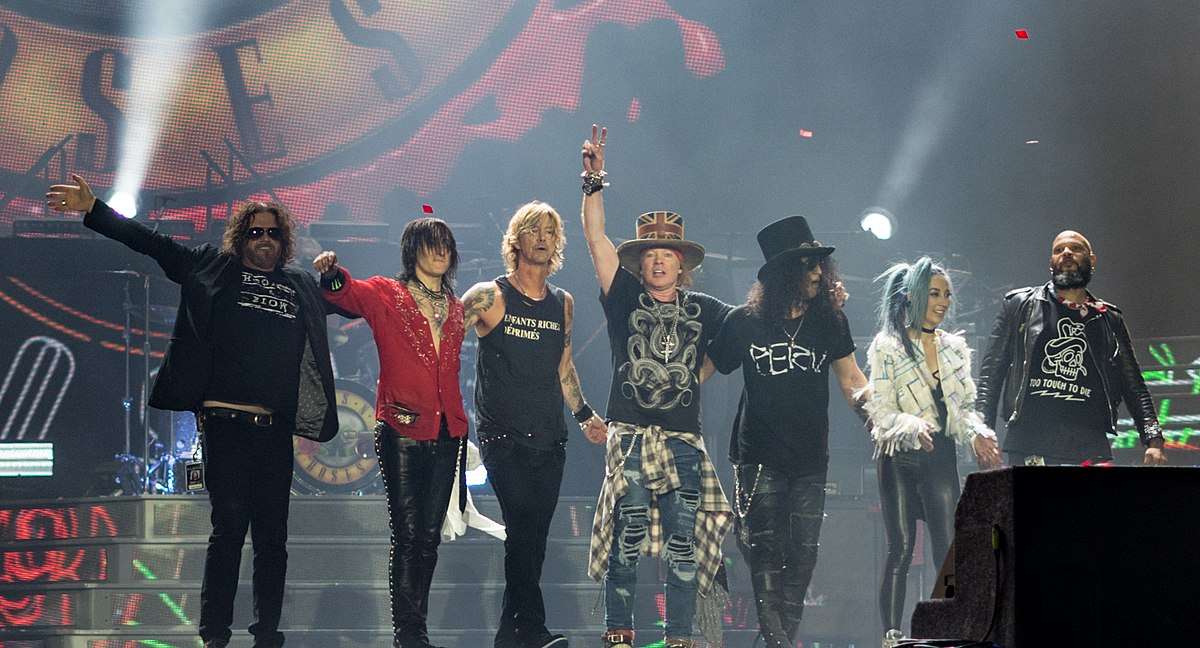
Guns N’ Roses: The Implosion of a Band That Flew Too Close to the Sun
In the late 1980s, *Guns N’ Roses* were not just a band—they were a phenomenon. Exploding onto the scene with *Appetite for Destruction* in 1987, they transformed from gritty Sunset Strip misfits into one of the biggest rock acts on the planet seemingly overnight. But with that meteoric rise came an equally dramatic fall, as the very things that made them compelling—the chaos, the ego, the danger—ultimately consumed them.
Led by the magnetic and unpredictable Axl Rose and the iconic top-hatted guitarist Slash, Guns N’ Roses embodied everything that was wild and unruly about rock ‘n’ roll. They weren’t just playing the part—they were living it. Their debut album wasn’t just a success; it was a revolution. *Appetite for Destruction* delivered raw, aggressive, and irresistibly catchy tracks like “Welcome to the Jungle,” “Paradise City,” and “Sweet Child o’ Mine,” instantly becoming a soundtrack for a generation.
Yet success, in this case, was a double-edged sword. The band had always been at their best in small, sweat-soaked clubs, where you could see the glow of Slash’s cigarette and feel
The Illusion of Control
By the early ’90s, the band had followed up with the sprawling and ambitious *Use Your Illusion I & II*, released simultaneously in 1991. Commercially, it was another triumph. Artistically? That’s more complicated.
The albums contained moments of brilliance—“November Rain,” “Don’t Cry,” “Civil War”—but also reflected a shift in the band’s internal dynamics. Where once Guns N’ Roses had been a band of outlaws pulling in the same direction, they were now orbiting around Axl Rose’s increasingly dominant vision. The creative process became less democratic and more dictatorial, with Axl calling the shots on everything from song arrangements to music video concepts.
Take the video for “Estranged,” for example: an over-the-top, multimillion-dollar production that featured Axl jumping off an oil tanker. It was emblematic of the *Use Your Illusion* era—lavish, excessive, and ultimately driven by Axl’s increasingly theatrical ambitions.
Fractures and Fallout
The band’s internal relationships began to deteriorate as quickly as their tours grew longer and more chaotic. The *Use Your Illusion* world tour—infamous for its delays, onstage meltdowns, and violent crowd incidents—lasted over two years and became a grueling endurance test for everyone involved.
Fuelled by drugs, alcohol, and ego, the band became a parody of itself. What had once been exhilarating unpredictability now felt like dangerous instability. And through it all, Axl Rose’s control tightened while the others, particularly Slash, began to chafe.
By 1995, something had to give. Slash, burned out from years of relentless touring and creative clashes, found an escape hatch. He returned to the basics: loud guitars, dingy clubs, and no expectations. He formed *Slash’s Snakepit*, teaming up with fellow Guns N’ Roses members Matt Sorum and Gilby Clarke, alongside Alice in Chains’ Mike Inez and Eric Dover of Jellyfish.
Back to the Roots
Speaking to *Metal Hammer*, Slash described the project as an act of creative liberation. “Snakepit was an outlet for me after two years of touring stadiums with Guns N’ Roses and dealing with everything that that entailed,” he explained. “I needed a simple rock’n’roll outlet so I could reinvent in my mind why I do what I do. Snakepit was just a bunch of guys throwing some music down.”
Originally, Slash had hoped to keep his name off the project entirely, wanting it to live or die on the music alone. But the realities of the music business—and his own celebrity—got in the way. “I wanted to call it just *Snakepit* but for legal reasons I had to put my name on it and the label wanted that too,” he said. “They figured they could sell a few more copies.”
Still, the experience proved to be cathartic. The Snakepit tour reconnected him with the joy of playing for smaller crowds and being in a band where collaboration, not control, was the driving force. It also may have been the final push he needed to walk away from Guns N’ Roses entirely.
In 1996, Slash officially left the band. It would be two decades before he’d return.
A Lesson in Excess
The story of Guns N’ Roses is as much a cautionary tale as it is a rock legend. They had the talent, the charisma, and the songs to define a decade—but success came at a cost they couldn’t afford. The intensity that made them great also made them volatile. They weren’t built for longevity. They were a firework: brilliant, loud, and over far too soon.
And maybe, just maybe, that’s what makes them unforgettable.
Leave a Reply